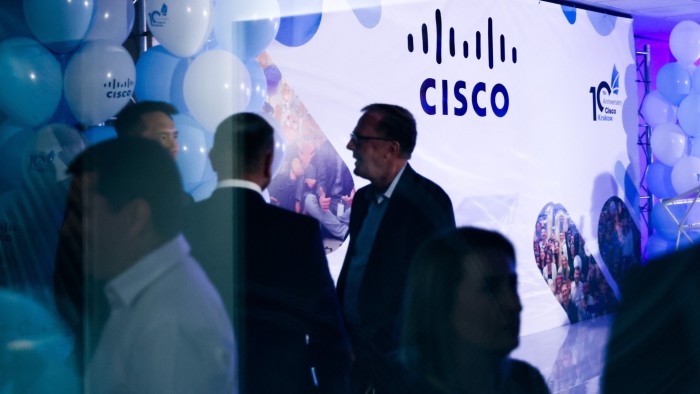Jack Naidoo began his career in apartheid South Africa. “I experienced some really horrible cases of racism,” he says of his early working years. Now, he is a leader of people and communities for Europe, the Middle East and Africa at technology conglomerate Cisco.
Naidoo shared these early experiences with a senior colleague through Cisco’s so-called proximity initiative. This encourages all the company’s leaders to reach out to a colleague whose identity and background differ from their own. The one-to-one conversations are an opportunity to understand the impact of different lived experiences — whether of race, sexuality, disability or otherwise — on them.
“Giving something of myself, sharing my background, made him acutely aware of how I show up in certain scenarios,” says Naidoo. “Sometimes, when I’m triggered, I start doubting myself,” he explains, describing the kind of imposter syndrome he is familiar with.
Such experiences can translate into tangible change. “I have seen behaviours change,” Naidoo says. “If you see somebody being talked over, constantly interrupted, it gives [leaders] permission to say, ‘let the person speak’ . . . it drives allyship.” By way of such connections, he adds, leaders “take on roles of advocates, mentors, sponsors”.
And this is one of the diversity, equality and inclusion (DEI) initiatives that earned Cisco’s European arm — headquartered in Amsterdam — top spot on this year’s FT-Statista list of European Diversity Leaders. The ranking is decided mostly by employee surveys, with a higher weighting for the experiences of under-represented groups.
It has been a rocky couple of years for DEI, though, particularly in the US, where Cisco has its main headquarters. A flashpoint came in June 2023, when the US Supreme Court ruled against the legality of affirmative action in higher education — a decision that led to a flood of lawsuits opposing DEI policies in the workplace.
The technology sector has been far from immune, with reports last year that companies were reducing their DEI work as a cost-cutting measure. The 2024 Diversity in Tech report, by the UK’s industry-funded Tech Talent Charter, declared that “diversity and inclusion in tech is facing a defunding crisis”. That organisation has, itself, since closed down, citing “operational pressures threatening the progress of DEI efforts across the industry”.
Cisco is the only IT company in the top 15 companies on the FT-Statista list. But, although it may, at times, feel like swimming against the tide, Naidoo is confident in the focus Cisco takes. “Diverse teams are the most productive . . . the most innovative. There’s a business case for diversity,” he notes.
Companies in the sector have a specific legacy to undo, he adds. “[It was] a white, male-dominated sector across Europe,” he points out. “You still see the legacy issues.” He describes a “limited pool” of top female tech talent in some parts of the region, particularly eastern and some parts of southern Europe.
Indeed, only 29 per cent of Cisco’s employees are women, although the executive leadership team performs better at 38 per cent. Pay parity is a key plank of Cisco’s approach to addressing this historical imbalance. The company was one of the 28 founding signatories of the White House Equal Pay Pledge.
Each year, Cisco reviews employees’ base salary, promotions, stock grant values, and bonuses — analysing for differences along gender, race and ethnicity lines. Cisco says 1-2 per cent of employees tend to receive adjustments to their pay for fairness after this exercise.
While the technology sector has its own challenges, it also has unique advantages. “Cisco is big on flexibility,” says Naidoo. “I think it’s one of the biggest attractors for us.”
Since the pandemic, Cisco has yet to mandate a return to the office. Naidoo believes this allows the company to hire a broader range of people, although he acknowledges that other senior leaders would prefer to move back to in-person working.
DEI is considered from the point of recruitment, he says, and Cisco’s “diverse talent accelerators” initiative embeds those goals in hiring processes.
The company uses technology to help it write neutral job adverts — removing implicit bias — and is proactive in ensuring that interviewee cohorts, as well as interview panels, are diverse.
As a result, Cisco has received recognition beyond the FT-Statista ranking: it has topped Fortune magazine’s “best company to work for” list three times. One area for which it has won particular accolades is its work on LGBTQ+ inclusion.
As Naidoo explains, this can, at times, almost act as a barrier to the goal of improving diversity. “Our attrition numbers are among the lowest in the industry,” he says. “So we have this pressure building up in the system . . . the average age of our workforce is increasing and we see younger colleagues becoming increasingly frustrated about potential growth opportunities.”
The company has had to innovate to get around this hurdle by, for example, offering job swaps to younger employees to boost their experience. “We’ve had to come up with mechanisms outside the traditional promotions,” Naidoo says. Among Cisco’s training programmes is one known as Jump, comprising a series of workshops for mid-level women to develop their skills and close the gender gap in leadership.
Challenges remain, Naidoo admits. “If you ask me, as a brown person, I always wonder why, every call I get on to, there’s not many people that look like me,” he says. Here, as in other areas, there is room to improve.
Read the full article here

